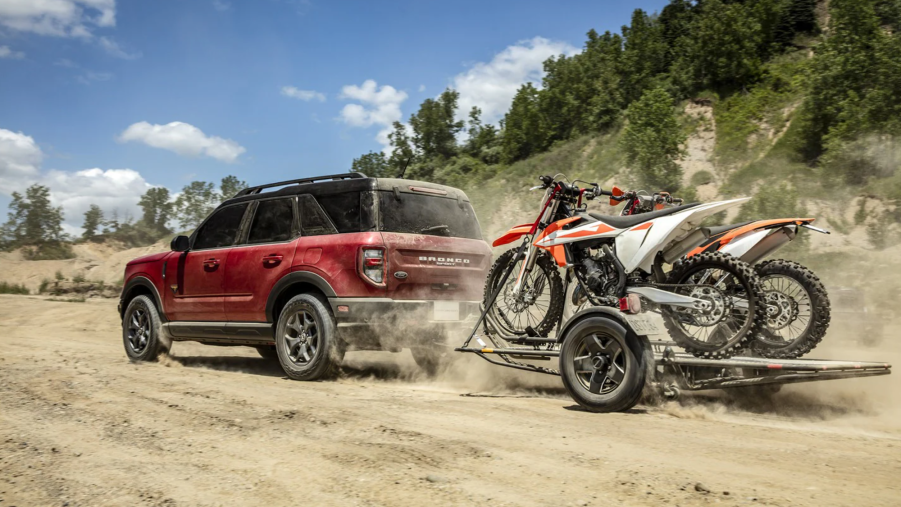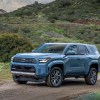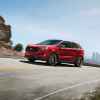
What Does the ‘Sport’ in the 2021 Ford Bronco Sport Even Mean?
When a car trim is called “Sport,” many consumers don’t know what to expect. Sometimes the word refers to the car’s performance or the most affordable trim you can buy. More often than not, the term refers to a smaller version of a full-size vehicle, such as the Ford Bronco Sport.
However, the Ford Bronco Sport’s name still might confuse some shoppers. Impressive off-roading performance is a given, but is the Bronco Sport actually sporty?
Why the ‘Sport’ label?
The baby Ford Bronco actually had two different names during its development process. Ford originally filed a trademark for “Bronco Scout” but was confronted with licensing conflicts from Navistar International. MotorTrend reports this company still owns “Scout” for naming vehicles over 2,400 pounds.
Ford also considered “Bronco Adventurer,” but the Blue Oval didn’t follow through on that name for unknown reasons. In any case, “Scout” and “Adventurer” would have been less confusing than “Sport.” While the baby Bronco is still powerful, it’s not really athletic in the traditional sports car sense. The previous two monikers portray a rugged and capable off-roader.
The Ford Bronco Sport vs. the full-sized Ford Bronco
Size is the most noticeable difference between the two, but both Ford Bronco models also pack different engines. The Bronco Sport has either a 181-hp turbo-three or a 245-hp four-cylinder on the Badlands and First Edition trims. An eight-speed automatic gearbox is standard, with optional paddle shifters for the upgraded engine.
The Ford Bronco comes standard with a 270-hp four-cylinder, paired with a seven-speed manual or 10-speed automatic transmission. The optional twin-turbo 310-hp V6, available for every trim, only allows for the 10-speed automatic. The full-sized Bronco has a maximum towing capacity of 3,500 pounds, while the Bronco Sport can tow 2,200 pounds.
The Ford Bronco is also built to tackle more off-roading challenges. It boasts 11.6 inches of ground clearance and can ford 33.5 inches of water. It even has better departure and break-over angles than the Jeep Wrangler — 37.2 and 29 degrees, respectively.
And the Bronco has more off-roading equipment, including beefy 35-inch tires and performance locking differentials. Unlike the smaller Bronco Sport, this Bronco’s roof and doors can come off.
Will people still buy the Ford Bronco Sport?
Though not as decked-out as its larger sibling, the Ford Bronco Sport is still fairly confident when off-roading. Both Broncos come with the standard G.O.A.T. system, which has up to seven terrain management settings. Electric power steering is also standard, tailored to provide adjustments, depending upon the terrain. The Badlands model offers an additional cruise control program for slower off-roading speeds.
The Ford Bronco Sport comes standard with an off-road-tuned suspension, with tougher suspension knuckles on the Badlands trim. Also, the Bronco Sport Badlands has the highest ground clearance, up to 8.8 inches. It can wade through water up to 23.6 inches deep.
And the Bronco Sport has two transfer case options, either a standard ducted air cooling or water cooling case. Both of them lack low-range or creeper settings, but the system automatically cools itself during extended rock-crawling jaunts. Anti-roll bars and upgraded shocks are also standard.
According to Car and Driver, the Ford Bronco Sport’s handling isn’t the most refined on civilized roads. The ride feels too jittery, and the steering wheel requires a lot of force to control.
The Sport might be the smaller of the two Bronco models, but the interior is still spacious and upscale. Even though it’s far from sporty, the Ford Bronco Sport’s misleading name probably won’t scare consumers away.


